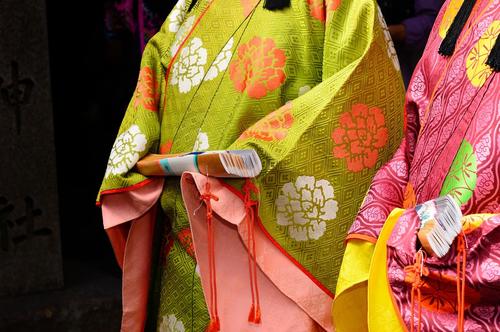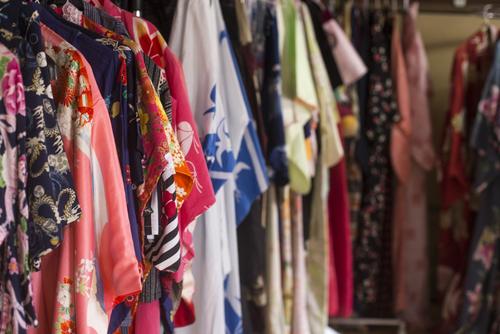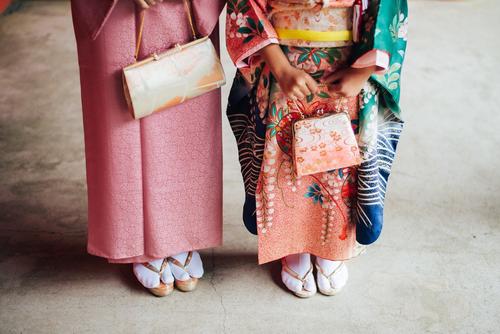The kimono is one of the cultural traditions that Japan is proud of overseas. Although it is no longer worn on a daily basis, there are still occasions when it is worn for important occasions such as coming-of-age ceremonies and weddings, and it is still a beloved tradition among Japanese people.
However, I think that not many people know the history of how kimonos were made.
Here we will explain the origin and history of the kimono, as well as important information about the kimono that you should know.
The origin and history of the kimono

How did the kimono come about in the first place? Here we will introduce the origins of the kimono and the changes it has undergone.
Is it said that the kimono originated in the Yayoi period?
The origin of the kimono is said to be something called "kosode." Kosode is a kimono with small cuffs, and was developed mainly for common people. The origin of kosode is said to date back to the Yayoi period.
During the Yayoi period, men wore kanpui, a single piece of cloth wrapped around the body, and women wore kantoui, a garment with a hole for the head.This was followed by the Kofun period, when men began to wear trousers and women began to wear skirts, two-piece clothing, and continued into the Asuka and Nara periods.
During the Asuka and Nara periods, a clear class system was established, and kosode was worn by the working class, in contrast to the ruling class, who wore clothes that hid their arms and legs and restricted their movement. At this time, the "collar with the right front" was stipulated by law, and this culture has been passed down to the present day.
Kimono culture made great advances during the Heian period
A major change in the history of kimono came during the Heian period, when kosode, which had previously only been worn as underwear by the ruling class, began to be worn as outerwear.
While the common people wore kosode, which was a simple kantogi with sleeves attached, making it easy to move around in, the kimono worn by the ruling class was called "osode," and evolved into a style with no sewn cuffs. The junihitoe, made up of multiple layers of osode, can be said to be a symbol of the ruling class of the Heian period.
Later, during the Kamakura and Muromachi periods, the word "kimono" was first coined. This was because short-sleeved kosode (shoulder sleeves) began to be used, and to distinguish them from kosode with full sleeves, people began to call these kosode "kimono." During this period, most people other than the nobility wore kosode with sleeves, so the idea that "kosode = kimono" became common and continued to this day.
In the Edo period, there were restrictions on kimono depending on one's social status.
During the Edo period, restrictions on the materials and colors of kimonos began to be placed on people of different social classes, and the differences in kimono according to social status became more pronounced. For example, wealthy merchants wore kimonos with elaborate embroidery, while commoners were only allowed to wear kimonos in a color scheme known as "shijuu hatcha hyaku nezumi."
It is said that common people then began to enjoy fashion through the patterns of their kimonos and the way they tied their obi.
Kimono knowledge: the meaning behind the patterns

Kimono come in a variety of patterns, but did you know that they all have meanings?
Here we will introduce some of the most representative ones.
What kimono patterns are considered auspicious?
The following four patterns are considered to be auspicious for kimono.
It also lists the places where they are most often used, so it's a good idea to check the meaning of each and choose the pattern that's perfect for the occasion.
·crane
As the saying goes, "A crane lives for a thousand years," cranes evoke the image of longevity, and are a pattern that symbolizes longevity and marital harmony.
It is often used in wedding ceremonies.
・Phoenix
The phoenix, a legendary creature from China, is a motif that symbolizes peace and marital harmony.
It is often used for wedding kimonos and is perfect for auspicious events.
・Pine, bamboo, and plum
The pine, bamboo, and plum pattern, which combines the pine tree, which never loses its green leaves even in winter, the bamboo, which grows straight, and the plum tree, which is one of the first to bloom at the end of winter, is a pattern that symbolizes perseverance and the birth of life.
It is often worn at weddings, but is also recommended for baby showers and children's events.
・Kanze Water
Kanze Mizu, which represents the flow of water, is a pattern that symbolizes the future. Just as water never remains stagnant, the future is also constantly changing.
It would be good to wear this to events related to the future, such as entrance ceremonies and graduation ceremonies.
What is the meaning of floral kimono patterns?
Of course, the floral kimono patterns that are popular among women also have meaning.
Here we will explain three representative flowers.
·cherry blossoms
Cherry blossoms, the national flower of Japan, are a pattern that symbolizes abundance and the beginning of new things. As the flower is reminiscent of spring, when many plants sprout, it represents the beginning of auspicious things. Although it is often thought of as something to wear in the spring, it is a pattern that can be worn in any season.
·peony
Peony, with its large and gorgeous petals, is a pattern that symbolizes nobility, wealth, and beauty due to its lustrous appearance.
Peony patterns are often large, so if you want something more vibrant, it's a good idea to choose one.
·camellia
Camellias, which have been used as cosmetics since the Heian period, are a pattern that symbolizes nobility and holiness.
It was once used as a medicine for immortality and longevity, so it seems to have been popular among aristocrats in the past.
What do kimono patterns featuring animals and insects mean?
The meanings of kimono patterns featuring animals and insects are as follows:
We will introduce the meanings of two typical patterns.
·butterfly
Because the caterpillar grows into a chrysalis and then a butterfly, the butterfly has become a pattern that symbolizes the healthy growth of women. Also, because the butterfly depicts the loving relationship between a pair, it is also known as a pattern that symbolizes marital harmony.
・Rabbit
Rabbits have been considered lucky charms because there is a rabbit pattern on the moon and they bring good luck.
Because of their high reproductive ability, the pattern is also a symbol of prosperity of descendants.
What is the difference between kimono, Japanese clothing, and gofuku?

We've explained a lot about kimonos so far, but some of you may be wondering about the difference between kimonos, Japanese clothing, and gofuku. In fact, in modern times, they all mean the same type of clothing, but they have different origins.
Here we will briefly explain the differences between each.
What is a kimono?
Kimono, as the name suggests, is a general term for clothing. Before Western clothing was introduced in the Meiji period, all clothing was called "kimono." As a result, clothing other than Western clothing came to be called kimono.
What is Japanese clothing?
The word "wafuku" was born as the opposite of Western clothing. The kimono that had been worn until then came to be called "wafuku" in order to distinguish it from Western clothing that was introduced during the Meiji period.
What is Kimono?
Originally, gofuku meant clothing made from fabric woven using methods that were introduced from the ancient Chinese state of Wu. During the Edo period, kimonos made from silk were called gofuku, and there was a clear difference between them and regular kimonos. However, the distinction between the two has gradually become blurred, and in modern times, the terms gofuku and kimono are used interchangeably.
summary
Kimono are a familiar garment for Japanese people, but there are probably many things about them that you didn't know. The meanings of kimono patterns that we introduced this time may be useful when wearing a kimono or when explaining about kimonos.
The kimono, which can be traced back to the Yayoi period, is now known as "kimono" overseas as well. Perhaps it is our mission today to properly understand and convey this traditional Japanese culture, "kimono," which we can be proud of, to the world.
This article has been partially re-edited by KARUTA from an article originally published on "Nihongo Biyori."
Any unauthorized reproduction or use of the contents, text, images, illustrations, etc. of this website is strictly prohibited.
